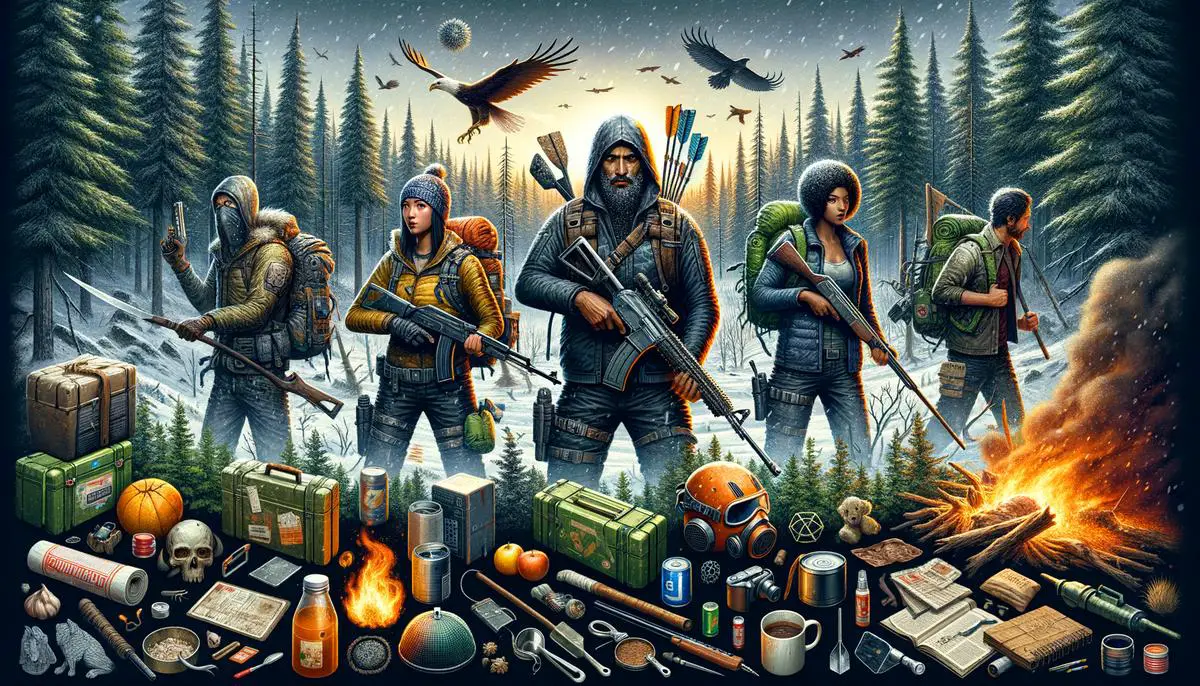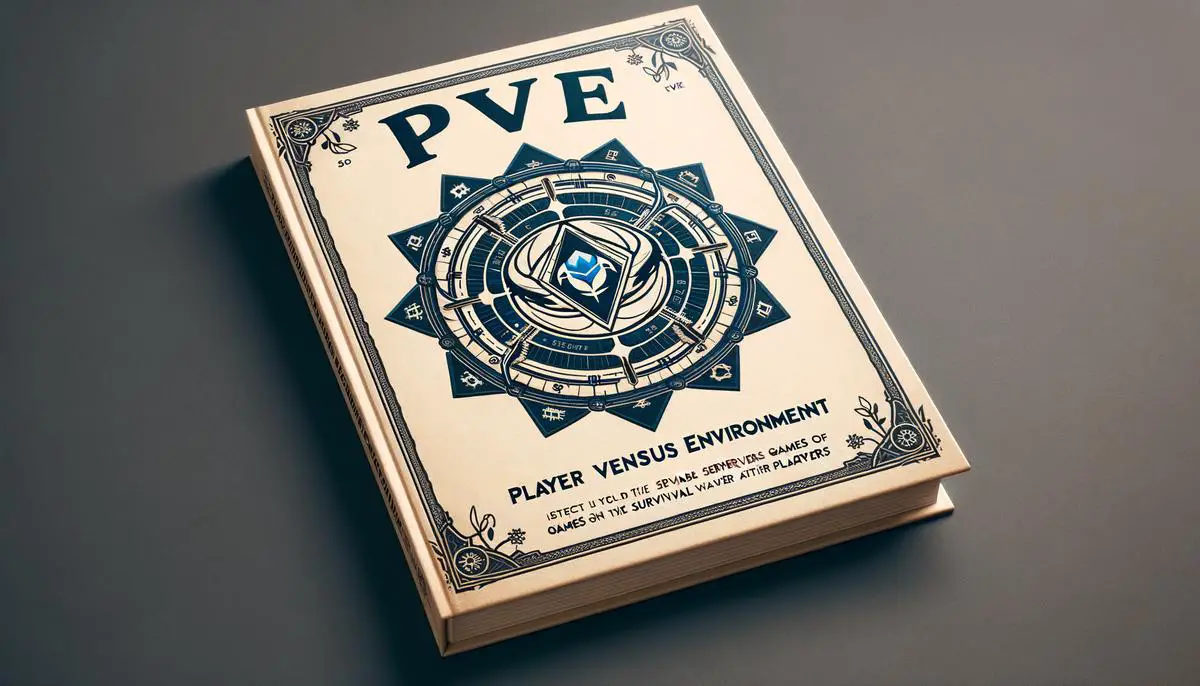Rust is an immersive multiplayer survival game that captures the essence of both strategy and endurance. The game challenges players to survive in a dynamic and often hostile environment, pushing them to master both player versus environment (PvE) and player versus player (PvP) gameplay. This article focuses on the PvE aspect, exploring the variety of strategies and tools players need to not only survive but excel in the world of Rust. From understanding the importance of base construction and resource management to mastering the game’s day-night cycle and crafting system, we will provide insights into optimizing your PvE experience.
Understanding PvE in Rust
Rust is a popular multiplayer online survival game that drops players into a harsh environment where they must gather resources, craft items, and build shelters to survive. While the game is well-known for its intense player versus player (PvP) combat, it also offers a rich player versus environment (PvE) experience. PvE gameplay involves players interacting with the game world itself, rather than competing against other players.
Let’s dive into what constitutes PvE gameplay in Rust.
First off,
environmental challenges are a core part of Rust’s PvE aspect. Players are thrust into diverse biomes, each presenting unique survival challenges. From the frigid temperatures of the snow biome, where hypothermia is a constant threat, to the arid desert biome with its risk of dehydration, the environment demands players adapt or perish. Crafting warm clothes, building fires, and finding fresh water sources are critical PvE activities that combat these environmental hazards.
Secondly, wildlife in Rust adds another layer to the PvE experience. The game world is inhabited by various animals, from wolves and bears to chickens and horses. Predatory animals pose a serious threat, especially for ill-equipped or unaware players. Hunting animals can provide essential resources such as food and materials for crafting, but taking down these creatures often requires strategy and preparation. This interaction with wildlife represents a crucial aspect of Rust’s PvE gameplay, blending survival with action elements.
The game also features PvE events and monuments, which are special areas or occurrences that provide opportunities and challenges for players. For instance, the Airfield, Train Yard, and Power Plant are complex areas guarded by scientists, AI-controlled characters equipped with firearms and protective gear. These areas contain valuable loot, including weapons and crafting materials, making them highly sought after. However, penetrating these zones and overcoming their defenses requires careful planning and resources, emphasizing the PvE aspects of exploration and combat.
Rust’s environment constantly evolves, with regular updates introducing new PvE elements. Events such as the helicopter attacks, where a heavily armed chopper patrols the skies and engages players on sight, require players to band together or devise solo strategies to take down or avoid the threat. These dynamic PvE events add variety and unpredictability to the game, ensuring that the PvE experience remains engaging over time.
In conclusion, PvE gameplay in Rust encompasses a wide range of activities, from battling the elements and wildlife to navigating treacherous monuments and responding to dynamic events. This rich PvE tapestry provides players with countless opportunities to test their survival skills, strategize, and interact with the game world in meaningful ways. Whether you’re a solo adventurer or part of a team, Rust’s PvE challenges ensure that there’s always something new to discover and overcome in the fight for survival.

Finding the Right Server
Choosing the Right PvE Rust Servers: A Guide for Players
When players decide to delve into the world of Rust, one crucial decision stands out: picking a server that aligns with their gameplay preferences. For those leaning towards a Player versus Environment (PvE) experience, where the challenge comes from the game itself rather than player competition, selecting the right server is paramount. PvE-focused Rust servers offer a unique blend of survival aspects without the constant threat of player raids, making it vital to identify servers that cater to this playstyle.
Community and Admin Support
- The backbone of any good PvE Rust server is its community and administrative team. A supportive community, often found through server forums or Discord channels, can drastically improve the gaming experience. Potential players should look out for servers where the community is active, welcoming, and keen on collaboration rather than competition. Equally crucial is the presence of an attentive and fair admin team. Servers with dedicated admins ensure a well-maintained environment free from glitches and foul play, providing a smoother PvE experience.
Custom Rules Tailored for PvE
- Each Rust server comes with its set of rules, and PvE servers are no exception. To ensure a fulfilling PvE experience, players should seek servers with custom rules designed to foster cooperation and protect players from griefing—an unfortunate commonality in many online games. These rules might include restrictions on raiding, base destruction by other players, and penalties for harassment. Reading through a server’s rule set before joining can give valuable insights into the server’s environment and whether it aligns with what you’re looking for.
Server Population and Size
- The population and size of a server can significantly impact your Rust PvE experience. A server with too few players might feel like a ghost town, making it difficult to trade, form alliances, or seek help. Conversely, overly populated servers might struggle with resource scarcity, making it hard to survive the PvE elements. Finding a server with a balanced population ensures enough interaction for an engaging experience without the cutthroat competition for resources.
Latency and Server Location
- Latency, or lag, can make or break your Rust experience. Servers located far from your geographical location may result in higher ping, leading to laggy gameplay that can affect reaction times—a critical aspect when facing Rust’s harsh PvE elements. Potential players should prioritize servers geographically closer to them or with known low latency to ensure a fluid gaming experience.
Server Stability and Uptime
- Lastly, the stability and uptime of a Rust server are crucial. Servers that frequently crash or undergo maintenance can disrupt the gameplay experience, especially in a game as time-sensitive as Rust, where progress can be lost in an instant. Reliable servers with high uptime percentages are preferable, as they allow for uninterrupted gameplay, letting players immerse themselves fully in the PvE challenges Rust has to offer.
In conclusion, selecting a PvE-focused Rust server requires consideration of various factors, including the community, admin support, custom PvE rules, server population, location, and stability. By taking the time to research and select a server that meets these criteria, players can ensure a more enjoyable and fulfilling PvE experience in the expansive world of Rust.

Enhancing Your PvE Experience
In the world of Rust, mastering Player versus Environment (PvE) gameplay is essential for survival, necessitating a blend of strategic thinking and the right toolset. While exploring the untamed wilderness and facing off against the game’s environmental hazards, players must employ effective strategies and utilize specific tools to thrive. This article delves into the techniques and instruments enhancing the PvE experience in Rust, building on foundational concepts such as environmental navigation and wildlife management.
One critical strategy in enhancing PvE gameplay is the optimization of base construction. The strategic placement of a base can significantly impact survival rates. For instance, establishing a base near resource-rich areas provides easier access to essential materials, but it also comes with the risk of frequent PvE encounters. Constructing bases with multiple layers of defenses, using materials that offer the best durability against environmental hazards, is a proven tactic. Additionally, integrating trap systems and utilizing the terrain to create natural defenses can deter NPC threats and protect valuable resources.
Resource management plays a vital role in PvE gameplay. Efficiently gathering and allocating resources can mean the difference between thriving and mere survival. Tools like the hatchet and pickaxe are indispensable for collecting wood and metal, crucial for crafting and base building. Players should prioritize upgrading these tools to increase efficiency. Furthermore, inventory management is key, especially when preparing for expeditions into high-risk areas. Carrying the right amount of food, water, and medical supplies, alongside weapons for defense against wildlife, ensures prolonged survival during explorations.
Understanding and exploiting the day-night cycle in Rust significantly influences PvE success. The cover of darkness can be a blessing or a curse. Nighttime offers the perfect opportunity for stealthy resource gathering or avoiding aggressive wildlife. However, it also increases vulnerability to unseen threats. Players who learn to navigate and operate effectively under the veil of night hold a strategic advantage. Utilizing light sources judiciously, to balance visibility and the element of surprise, becomes a critical skill.
Collaboration and networking within the Rust community present another layer of strategy. Forming alliances or joining clans can provide safety in numbers, shared resources, and collective defense against PvE challenges. Even in predominantly PvE-focused gameplay, human interactions play a significant role in shaping the player’s experience. Leveraging community knowledge through forums and discussions can reveal tips and tricks that enhance PvE survival tactics, from effective base designs to encounter strategies for the toughest PvE events.
Finally, mastery of the game’s crafting system significantly enhances PvE gameplay. Crafting not only allows for the creation of essential tools and weapons but also enables players to produce items that automate or simplify tasks. For instance, auto-turrets can defend against NPC raids, while water catchers and large furnaces streamline resource processing. Understanding the crafting recipes and prioritizing the development of critical items is a strategy that seasoned players employ to maximize efficiency and security in the game’s harsh environment.
In conclusion, Rust’s PvE gameplay demands a blend of strategic foresight, efficient resource management, and a deep understanding of the game’s mechanics. From the strategic construction of bases to mastering the day-night cycle and leveraging community networks, players equipped with the right strategies and tools can navigate Rust’s challenges more effectively. As the game continues to evolve, staying adaptable and continuously refining these strategies will ensure players not only survive but thrive in the ever-changing world of Rust.

Mastering Rust’s PvE gameplay is a testament to a player’s survival skills, strategic planning, and adaptability. Through carefully constructing bases, efficiently managing resources, and forming beneficial alliances, players can shape their story of survival in Rust’s unforgiving world. As the game continues to evolve, staying ahead means constantly refining your strategies and being prepared for whatever challenges come your way. Embrace the complexity of Rust’s PvE, and you will find yourself not just surviving, but thriving and leaving a mark in this intricate world.
- Guide to Life Is Strange: True Colors Ch. 1 Choices - April 4, 2024
- Catching Spiritomb in Pokemon BDSP - April 4, 2024
- Mastering Life Is Strange: Key Choices in Chapter 1 - April 4, 2024
Visits: 1








